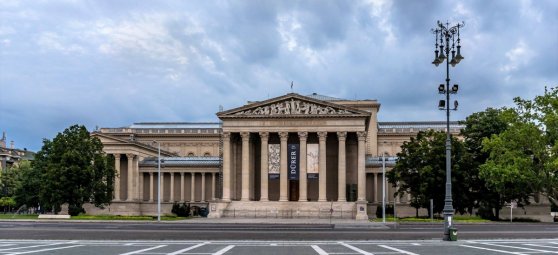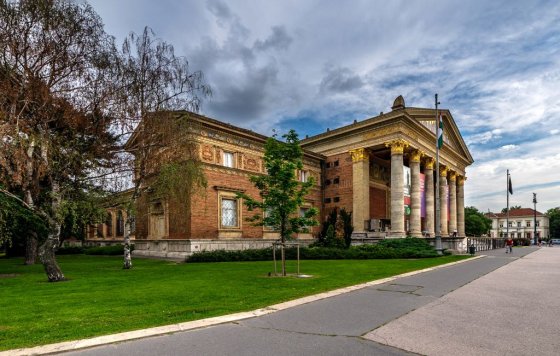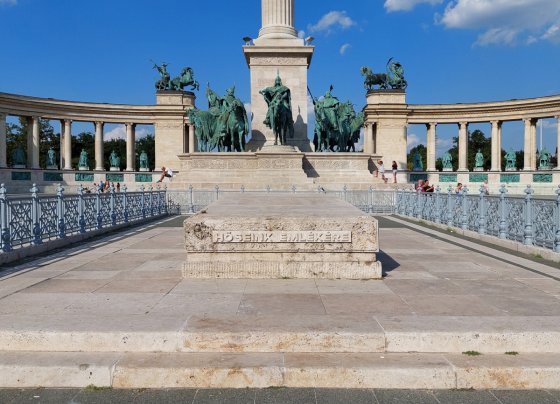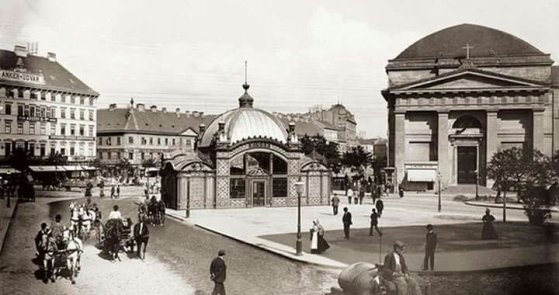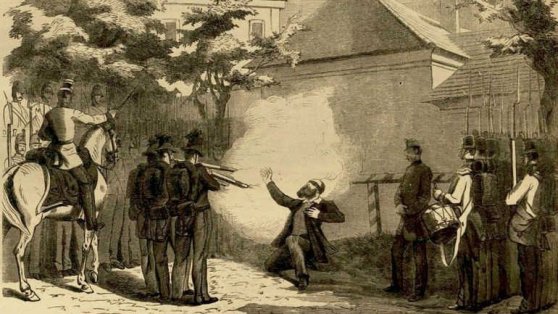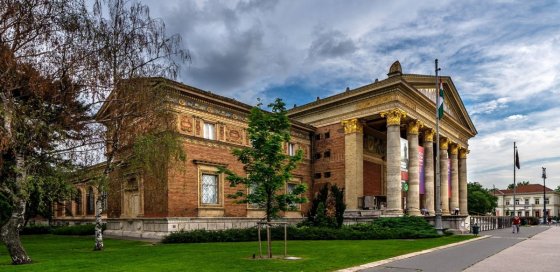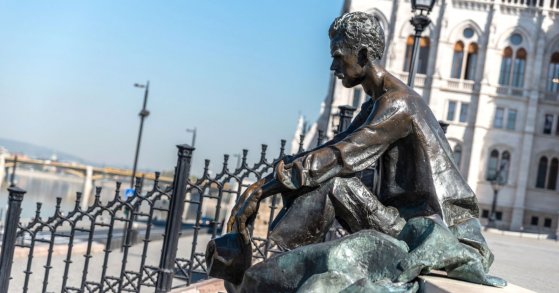 The „intertwined history” of the bridges and the city of Budapest
Which ideas and events have shaped the fate of bridges of Budapest and the cityscape? Alongside many other interesting facts, this question is also answered this newly published book by the Budapest City Archives, which introduces the history of bridges in Budapest.
The „intertwined history” of the bridges and the city of Budapest
Which ideas and events have shaped the fate of bridges of Budapest and the cityscape? Alongside many other interesting facts, this question is also answered this newly published book by the Budapest City Archives, which introduces the history of bridges in Budapest.
Albert Schickedanz
 Renovation of the Art Gallery may begin soon
Renovation of the Art Gallery may begin soon
May 30, 2022 at 11:30 AM
One of the wedges of Heroes' Square, the Art Gallery designed by Albert Schickedanz, will soon be renewed. The first phase of the renovation of the building, completed for the Millennium Exhibition in 1896, is the restoration of the façade, for which a heritage protection permit has recently been obtained.
The Church of Arts - The building of the Museum of Fine Arts is 115 years old
December 5, 2021 at 11:00 AM
The Museum of Fine Arts is one of the most famous buildings in the country, without which the Heroes' Square is unimaginable. Yet this was erected the latest, it is ten years younger than the Kunsthalle opposite. However, its size and seriousness make this fact forgettable - and of course it is no longer young, it was opened to the public 115 years ago. In this context, Pestbuda presents its history and beautiful interiors, which house one of the richest art collections in Central Europe.
Preparations for the renovation of the Kunsthalle have begun
August 26, 2021 at 2:00 PM
The building of the Kunsthalle in Heroes' Square was built for the Millennium Exhibition according to the plans of architect Albert Schickedanz. On the 125th anniversary of its existence, preparations began for the complete renovation of the building.
The Memorial Stone of Heroes was torn down 70 years ago
August 26, 2021 at 11:00 AM
In the shadow of the Millennium Monument, another work is hidden in the Heroes' Square. The Memorial Stone of Heroes symbolises a mass grave, originally erected in 1929, in memory of the soldiers of the First World War resting in anonymous graves, but it was not mourning that was its primary message, but mobilisation against the changing millennial boundaries. The memorial stone was demolished in 1951 but re-erected in the spring of 1956 and then in 2001, in a different form and with new messages.
Ornaments for three decades – The entrance halls of the Millenium Underground Railway
March 4, 2021 at 10:00 AM
Continental Europe's first underground railway was opened on 2 May 1896, the first day of the national millennium celebrations, after only nineteen months of construction. The unique vehicle strengthened the character of Budapest as a global city, connected the centre of Pest with City Park. The implementation involved construction not only underground but on the surface: with the exception of the Opera House, an entrance hall was built at the stations. However, these ornate little buildings later fell victim to the “modernisation” of the cityscape.
Lajos Batthyány's public reburial took place 150 years ago – The 42-year-old Prime Ministers was buried in secret after being executed
August 5, 2020 at 1:00 PM
The execution of Count Lajos Batthyány, the first elected Hungarian prime minister, remains an indescribable act of retaliation after the war of independence. The prime minister was buried in secret and then reburied publicly 21 years later, in 1870, with great pomp. The nation laid him to rest in a funeral fitting the difficult diplomatic solution worthy of a great politician.
Renovation of Hall of Art to begin as Government confirm priority status
July 15, 2020 at 10:00 AM
The Government has declared the renovation of the Hall of Arts to be a project of national economic importance and investment of high public interest. The building was originally constructed in 1896 as part of the events to commemorate the millennium of Hungarians living in the Carpathian Basin. However, when work will begin on the building, designed by Albert Schickedanz and inaugurated by Franz Joseph, is currently unknown.
Poetry Day Walk - Statues of the greatest Hungarian poets in Budapest
April 11, 2020 at 10:00 PM
On this year's National Poetry Day, 11 April - the birthday of Attila József - the public, community poem readings, which have already become a tradition, were cancelled, and we could not even visit the statues of the greatest Hungarian poets to show our respect and gratitude. Thus, Pestbuda offers only a virtual walk between the works depicting our national greats in Budapest.
More articles
 The „intertwined history” of the bridges and the city of Budapest
Which ideas and events have shaped the fate of bridges of Budapest and the cityscape? Alongside many other interesting facts, this question is also answered this newly published book by the Budapest City Archives, which introduces the history of bridges in Budapest.
The „intertwined history” of the bridges and the city of Budapest
Which ideas and events have shaped the fate of bridges of Budapest and the cityscape? Alongside many other interesting facts, this question is also answered this newly published book by the Budapest City Archives, which introduces the history of bridges in Budapest.
 The Bridge Report, which brought a turning point in the history of Budapest
A travel report that changed the history of Pest and Buda, as well as Hungary. The little book contributed to the change of half a thousand years of legal customs and the implementation of an investment of unprecedented size and technical quality. This book was The Bridge Report [Hídjelentés in Hungarian].
The Bridge Report, which brought a turning point in the history of Budapest
A travel report that changed the history of Pest and Buda, as well as Hungary. The little book contributed to the change of half a thousand years of legal customs and the implementation of an investment of unprecedented size and technical quality. This book was The Bridge Report [Hídjelentés in Hungarian].
 Drama on the university wall - The heroic monument was planned 95 years ago
In the constant hustle and bustle of the Egyetem Square in Pest, the students may not even notice the monument that decorates the short section of wall between the church and the central building of ELTE. However, it commemorates their predecessors, the heroes who fought for their country in World War I, and those who heroically helped them. The first design of the dramatically collapsing soldier was born in 1928, ninety-five years ago.
Drama on the university wall - The heroic monument was planned 95 years ago
In the constant hustle and bustle of the Egyetem Square in Pest, the students may not even notice the monument that decorates the short section of wall between the church and the central building of ELTE. However, it commemorates their predecessors, the heroes who fought for their country in World War I, and those who heroically helped them. The first design of the dramatically collapsing soldier was born in 1928, ninety-five years ago.

